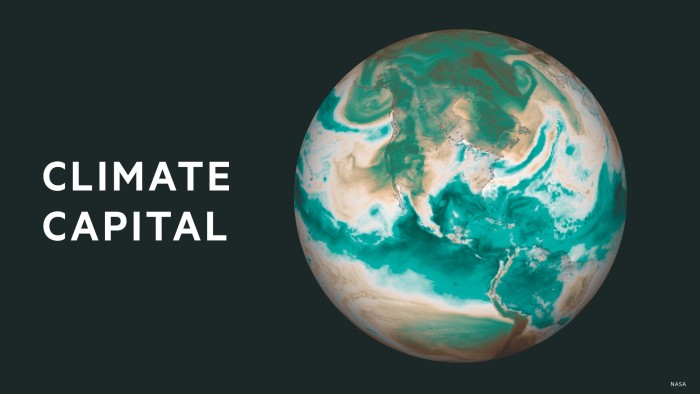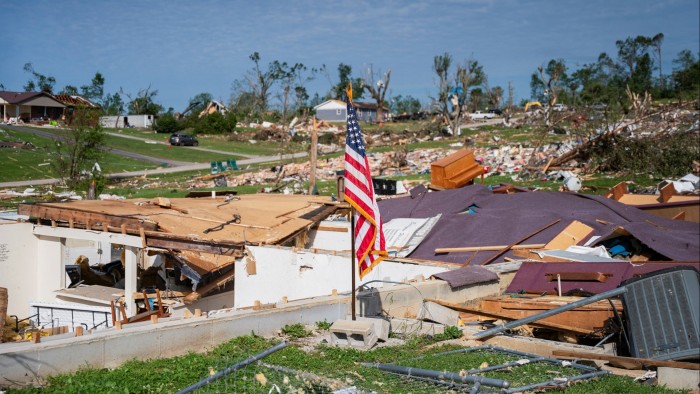Stay informed with free updates
Simply sign up to the Climate change myFT Digest — delivered directly to your inbox.
Devastating tornadoes destroyed thousands of homes in Missouri and Kentucky earlier this month, casting a spotlight on how climate-related disasters might affect home lending across the US.
A new report by climate risk rating firm First Street found that costly climate disasters are raising the risk of home repossessions, or foreclosures, as the process is known in the US.
By its estimates, credit losses could cost US mortgage lenders as much as $1.2bn this year from about 19,000 repossessions due to climate risk. By 2035, it is forecast to grow to $5.4bn in losses from almost 84,000 repossessions.
Gaps in flood insurance, as well as a combination of financial stressors resulting from climate risks, heighten the risk of borrower defaults, the report said, including high insurance costs and falling property values.
“Mortgage markets are now on the front lines of climate risk,” said Jeremy Porter, First Street’s head of climate implications. “We need to price risk properly.”
Beyond the topline figures of $1.2bn and $5.4bn in potential mortgage-related credit losses, I wanted to show how such losses varied by location.
Florida and California, for example, suffer from hurricanes and wildfires, respectively, and are already seeing insurance costs rising to the point of being unaffordable, or being withdrawn altogether. These two states experience higher than average policy non-renewal rates than elsewhere, with more expensive insurance premiums.
It follows that estimated losses from home repossessions in those states were higher than many parts of the US, according to the analysis, which looked at how past wildfires, floods and hurricanes had affected repossession rates as well as indirect factors such as insurance premiums and broader economic strain.
To map out mortgage-related losses across the US for 2025, I used the county-level estimates from First Street, which provided its data to the Financial Times.
At the FT, we often use Qgis, an open-source geographic information system software, to edit maps and conduct geospatial analysis. But in this case, I was able to whip up a map pretty quickly using our data visualisation tool, Flourish, because the data provided by First Street in a CSV (comma separated values) format was ready to map in a simple spreadsheet.
I wanted to colour each county according to how high the estimated mortgage-related credit losses would be for 2025. This is known as a ‘choropleth’ map. The darker the shade of blue, the higher the estimated loss.
All I had to do was pick the relevant column of data from the First Street spreadsheet in Flourish to set the range of blues used to represent the variety of costs across the map.
From the map alone, readers can see that coastal parts of the country — including in Florida and Louisiana — and large swaths of California, should expect steeper credit losses this year due to climate risk. Those three states alone will account for more than half, or 53 per cent, of climate-linked mortgage losses this year, the analysis shows.
Climate Capital

Where climate change meets business, markets and politics. Explore the FT’s coverage here.
Are you curious about the FT’s environmental sustainability commitments? Find out more about our science-based targets here
https://www.ft.com/content/5d5bbc4f-d30c-4849-b141-bb3e5101b918



